Grass Gives Way to Wildflowers: A Neighborhood Initiative to Provide Pollinator Habitat in Keene
- Sarah Ellsworth
- Jun 5, 2025
- 3 min read
The Edgewood neighborhood is a residential development that hugs the eastern Keene-Swanzey border. Geographically, the area was originally pine barrens and became home to New England’s first conifer nursery in 1906. The city aptly refers to our neighborhood as Edgewood because it is edged by woods. The Dillant-Hopkins Airport and the Keene Water Treatment Plant are on the other side of those woods, a portion of which was donated to the city by the Edgewood Civic Association in the 1960s. Within these woods there is a rare Kettle Bog. You can find Lady Slippers and Downy Rattlesnake Plantains growing. Peregrine falcons have been known to roost in the tall white pines. Bears, coyotes, deer, foxes and possums wander the woods. It is a lively place.
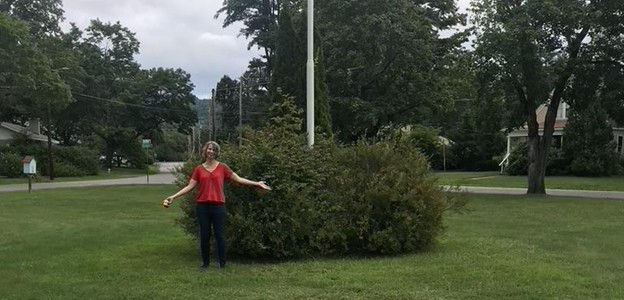
At the heart of our neighborhood lies an almost 2 acre commons. It is the remnant of a fairground opened by the Keene Driving Park Association in 1875. The fairground was an active place hosting horse races and early professional baseball games until 1913 when the Park Corporation laid out streets for a housing development. The first houses were built facing the commons. For many years following development, neighborhood children used the flat, grassy space as a natural playground but in recent years the area has been largely unused except for an occasional yard sale. It felt somewhat lifeless and unloved, an open space marked only by a flag pole flanked with invasive species with one proud oak tree at its center.
In July of 2023 I noticed a decrease in the numbers of hoverflies, wasps, sphinx moths and other pollinating insects that normally buzz about the lavender bergamot, echinacea and oregano flowers in my backyard. I felt moved to do something even though I was not sure what that could be! I sent an email out on our neighborhood email chain. Jamie Doherty, Ann Shedd and Mark Meess responded and we met the following week.
The meeting was a fruitful one and we settled on the idea of creating a pollinator garden on the commons. This seemed eminently do-able. We just had to get the city to agree!
Jamie and I launched into the project enthusiastically, reaching out to the neighborhood via email to solicit any positive or negative feedback regarding our idea. We received a couple of positive responses and none that were negative so we attended a meeting with the Keene Conservation Commission in August of 2023. They loved our plan and recommended that we meet with Parks and Recreation. We came prepared with a proposal we hoped would appeal to them.
The goals we presented were:
Beautify an otherwise open and unused space
Reduce the amount of mowing and maintenance required by the city
Provide food and habitat for bees, butterflies and other local fauna
Provide educational information to those that visit
In addition we emphasized the importance of community involvement and native plantings:
To encourage community participation, neighbors would be invited to share their own native seeds and seedlings to fill the area.
Depending on the amount of funding received and cost
of site preparation, plants could also be purchased from Fassett Farm Nursery, or any other local nurseries that specialize in native plants.
The goal would be to utilize a mixture of annuals, perennials, and biennials with varying bloom times that cover the course of the growing season. This would ensure that there would always be food available to pollinators and flowers for visitors to admire.
By January 2024, the city agreed. In addition, Jamie applied for a Cheshire County Conservation District grant to boost our planting budget. We received the welcome news that we had received a grant in March. In June, the city brought in their machinery and prepared the site, removing sod and invasive plants around the flagpole.
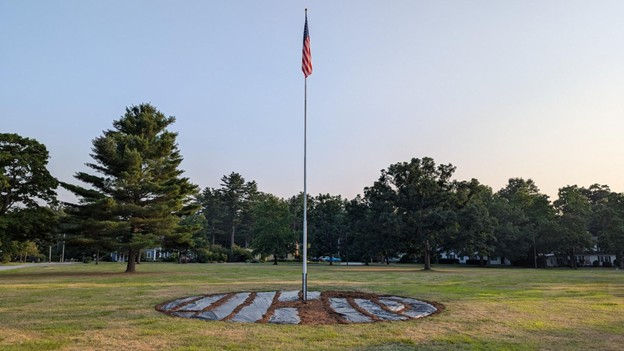
We began solarizing the area with cardboard and plant based compostable black plastic. Utilizing email, we kept the neighborhood informed and encouraged involvement. Several people offered native plants from their yards. With each update, interest seemed to grow. We even heard that a realtor used the garden project as a selling point for a house in our neighborhood! Finally, in September 2024, a group of neighbors and friends gathered to plant the purchased, cultivated and donated native plants. A homeowner whose house faces the commons generously offered an outdoor water source.
The plants have thrived and we have already seen some pollinator species partaking of the late blossoms. So exciting! We have planted more bare root plant stock and in November, anticipating the first snow, we spread some additional native seeds. An education sign was installed to inform passersby of the goals of the project.

We hope this garden becomes a gathering place for pollinators, birds and humans alike as it begins to thrive. Future plans include petitioning the city to expand the garden and donate a bench. We invite you to visit and enjoy its progress with us!





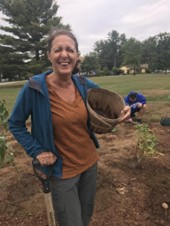
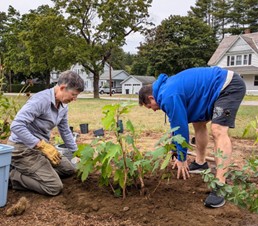
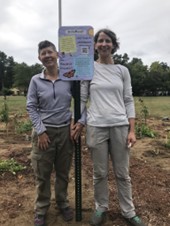



Comments